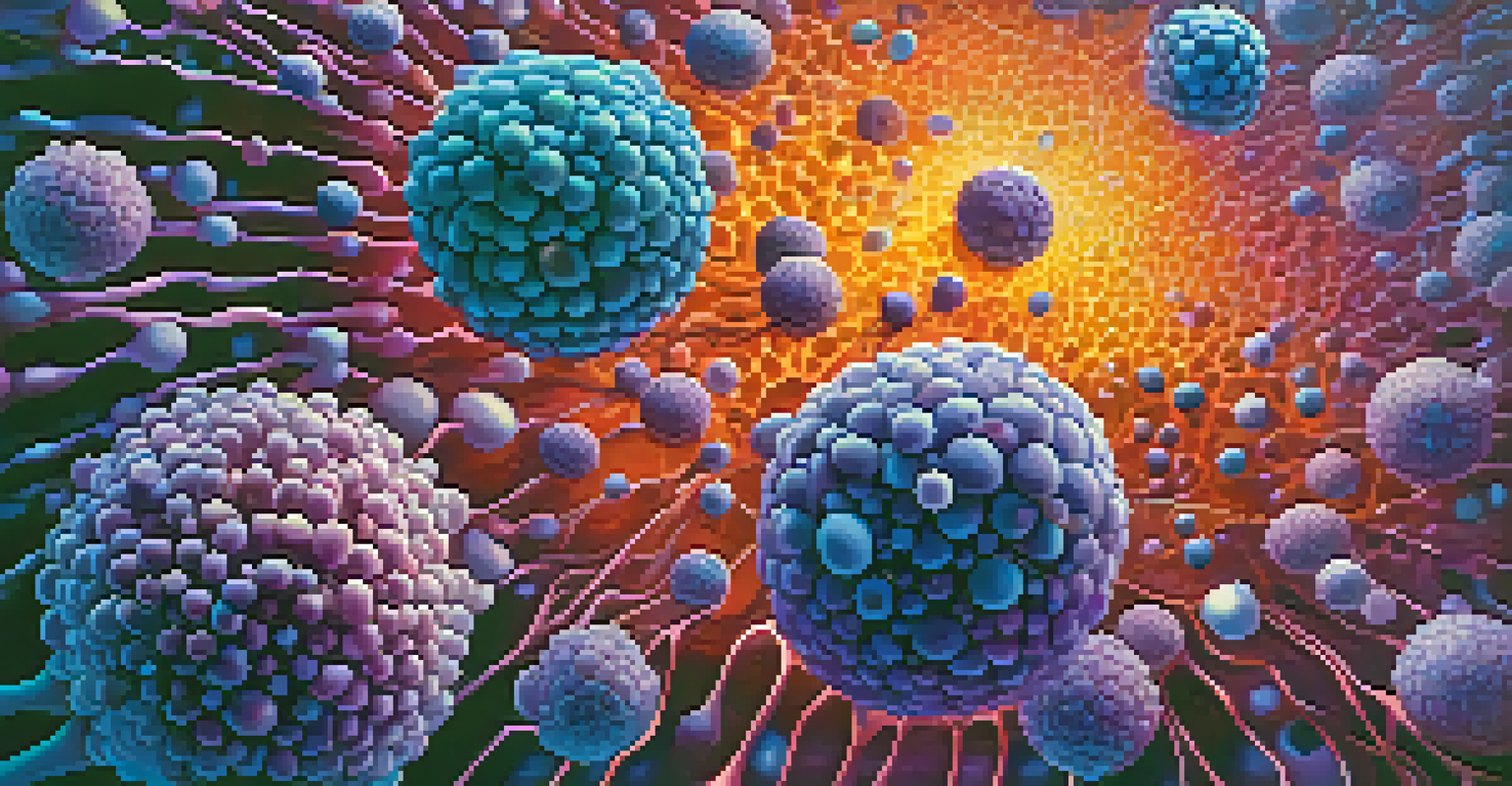Nanotechnology in Drug Delivery: A New Frontier in Medicine

Understanding Nanotechnology and Its Role in Medicine
Nanotechnology, the manipulation of matter on an atomic scale, is paving new paths in medicine. By working with materials at the nanoscale, researchers can create innovative solutions for drug delivery. This technology allows for precise targeting and controlled release, making treatments more efficient and effective.
Nanotechnology is poised to revolutionize medicine, paving the way for breakthroughs in drug delivery and targeted therapies.
Think of nanoparticles as tiny delivery trucks that can transport medication directly to where it's needed in the body. This targeted approach minimizes side effects and maximizes therapeutic benefits. For instance, cancer treatments can be delivered straight to tumor cells, sparing healthy cells from damage.
As we delve deeper into the world of nanotechnology, it's clear that its potential is vast. From improving the solubility of poorly soluble drugs to enabling imaging techniques, its applications are as diverse as they are promising.
How Nanoparticles Enhance Drug Delivery Systems
Nanoparticles can significantly enhance drug delivery systems by providing a versatile platform for medication. They can be engineered to respond to specific stimuli, such as pH changes or temperature variations, ensuring that the drug is released at the right time and place. This level of control is a game changer in pharmaceutical science.

For example, some nanoparticles are designed to release their drug payload only when they encounter the acidic environment of a tumor. This way, healthy tissue remains unaffected, reducing the risk of side effects commonly associated with traditional therapies.
Nanotechnology Revolutionizes Medicine
Nanotechnology enhances drug delivery by targeting specific cells, leading to more effective treatments with fewer side effects.
This innovative delivery method not only improves treatment outcomes but also allows for lower dosages. Patients can experience fewer adverse effects while still receiving the full benefit of their medication.
The Advantages of Targeted Drug Delivery
One of the most significant benefits of nanotechnology in drug delivery is its ability to target specific cells or tissues. This precision reduces the likelihood of side effects common with systemic treatments, such as nausea or fatigue. By delivering drugs straight to the problem area, patients can often tolerate higher doses.
The future of healthcare lies in personalized medicine, and nanotechnology is at the forefront of this evolution.
Moreover, targeted delivery can enhance the overall effectiveness of treatments. For instance, in the case of antibiotics, nanoparticles can navigate through bodily barriers to reach infected sites more efficiently than traditional methods.
This targeted approach not only improves patient comfort but also contributes to better health outcomes, making the case for broader adoption of nanotechnology in clinical settings.
Challenges Facing Nanotechnology in Drug Delivery
Despite its promise, nanotechnology in drug delivery isn't without challenges. One significant hurdle is the regulatory landscape, which can be complicated and time-consuming. Navigating the approval process for new nanomedicines requires thorough testing and evidence of safety and efficacy.
Additionally, the production of nanoparticles can be complex and costly. Researchers must ensure that these tiny carriers are manufactured consistently and meet strict quality control standards to be viable for widespread use.
Smart Drug Delivery Systems Emerge
Future advancements in nanotechnology and artificial intelligence aim to create personalized drug delivery systems that adapt to individual patient needs.
Lastly, understanding the long-term effects of nanoparticles in the body remains an area of ongoing research. Scientists are actively investigating how these materials interact with biological systems to ensure they are safe for patients.
Real-World Applications of Nanotechnology in Healthcare
Nanotechnology is already being utilized in various real-world healthcare applications. For instance, several cancer therapies use nanoparticles to enhance drug delivery systems, allowing for more effective treatment with fewer side effects. Companies are now developing nanoparticles that can deliver chemotherapeutics directly to tumors.
Another exciting application is in vaccines. Nanoparticles are being explored as adjuvants, which enhance the body's immune response to vaccines, making them more effective. This has particular relevance in the development of vaccines for rapidly spreading diseases.
The integration of nanotechnology into medical practices is not just theoretical; it's happening now, indicating a promising future for this innovative approach in healthcare.
Future Trends in Nanotechnology for Drug Delivery
As we look to the future, the potential for nanotechnology in drug delivery continues to grow. Researchers are exploring advanced materials that can improve the stability and effectiveness of drug formulations. Innovations like biodegradable nanoparticles are paving the way for safer, more sustainable drug delivery options.
Moreover, the integration of artificial intelligence and nanotechnology could lead to smarter drug delivery systems. These systems could adapt in real-time to the body's needs, providing tailored treatments for individual patients.
Challenges in Nanotechnology Adoption
Despite its potential, nanotechnology faces hurdles such as regulatory complexities and the need for thorough safety evaluations.
The future of drug delivery is not just about making medications more effective; it's about personalizing medicine to fit each patient's unique profile, a significant leap forward in how we approach healthcare.
Conclusion: Embracing Nanotechnology in Medicine
Nanotechnology is undoubtedly a transformative force in drug delivery and modern medicine. Its ability to enhance targeting, improve efficacy, and reduce side effects is revolutionizing how we approach treatment for various conditions. As research progresses, we can expect to see even more innovative applications emerge.
While challenges remain, the ongoing exploration of nanoparticles holds immense promise. By embracing these advancements, the medical community can enhance patient outcomes and redefine therapeutic possibilities.

In essence, nanotechnology isn't just a trend; it's a new frontier in medicine that could profoundly change the way we think about drug delivery and treatment strategies.